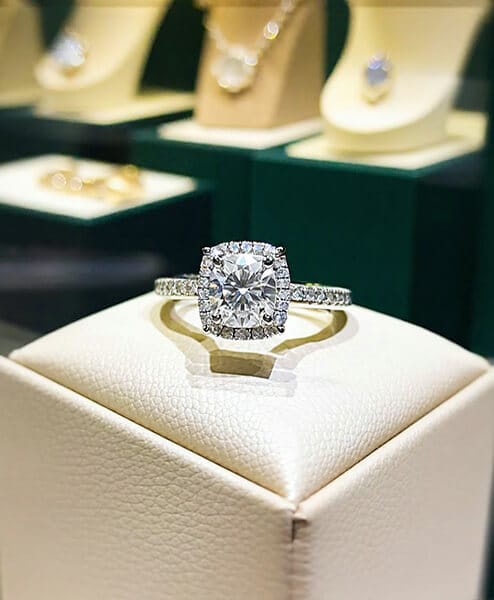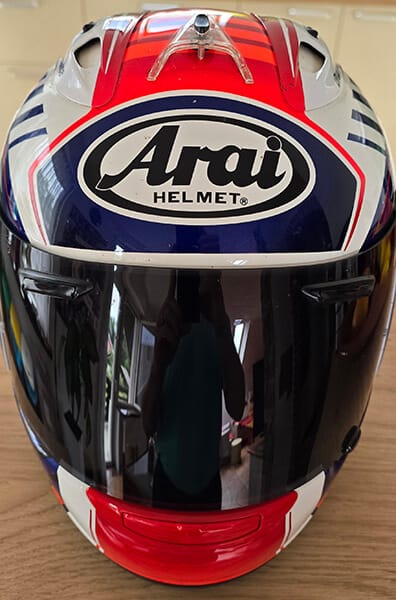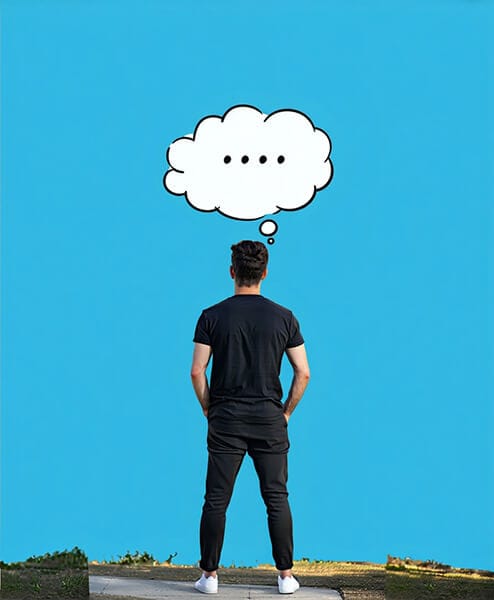
It was the year 1989. As a young and ambitious entrepreneur, I went to a seminar in Graz, Austria. Even back then, I knew that true growth requires investment—not only of time and money, but of life energy into knowledge and work. I realized that one must manage their life energy effectively, because without it, nothing truly works.
Even though I hadn’t yet heard the famous quote “Where focus goes, energy flows,” I somehow already understood its truth deep inside.
It’s a thought we often hear today from Tony Robbins, one of the most influential teachers of personal and business growth in the world. Yet its origin goes much deeper—into ancient spiritual teachings and modern quantum physics.
All of these sources teach us the same thing: whatever you give your attention to begins to grow. The moment you truly notice something, you give it power.
Realizing that managing your life energy is the new currency of success

Today, people often say that time management is the key. But even back then, I intuitively sensed something deeper—that what really matters is how effectively we manage our life energy.
Because even if you have the whole day, without true focus, inner fire, and heartfelt presence, you won’t create anything of real value.
Life energy is what gives thoughts power, words meaning, actions impact, and relationships depth.
Without it, nothing flows. With it, everything is possible.
At that seminar, I heard a story that has stayed with me to this day—one that anchored the realization that it is energy that sells, not arguments.
A story that touches deeper

A highly successful businessman was on a business trip in a small town. While walking, something in the window of a tiny jewelry store caught his eye. He went in, thinking of buying something special for his wife.
A polite young salesman greeted him and asked what he was looking for. The businessman explained he wanted a gift, something truly special. The salesman showed him a beautiful diamond ring.
He explained all the technical details clearly and kindly: the purity of the gold, the carats, the stone’s origin, the craftsmanship.
The businessman thanked him and said he would think about it.
As he was about to leave, a gentle voice of an older man stopped him:
“Sir, may I ask you for just a moment?”
The businessman nodded.
The old man slowly took the very same ring into his hands. He looked at it. And then… he caressed it.
He didn’t say much. But in that short moment, everything was said.
The businessman paused and felt something he couldn’t put into words.
“I’ll buy it,” he said quietly.
After completing the purchase and walking to the door, he turned back and asked the older man:
“Excuse me… the young salesman was kind and professional, yet he didn’t convince me. With you, I knew instantly that I had to have it. Why?”
The old man smiled and replied calmly: “Our young colleague is excellent. He knows all the details of our jewelry. Competitors are trying very hard to lure him away, and we do our best to keep him.
But you see… I love this ring.”
Vibration, resonance, and critical mass

At that time, people weren’t talking about quantum physics, neuromarketing, or the influence of the human energy field. But today science increasingly confirms what some of us already sensed back then—that decisions, including buying decisions, are not driven by reason, but by feeling.
What I experienced that day at the seminar revealed a truth that no business manual taught—but one that was real, effective, and lasting.
When you truly love something (when you care), the customer feels it too. And at that point, it’s no longer about selling. It’s about transmitting energy, or vibration.
Your attitude, your inner state, your energy—it all travels through your words, your gestures, your presence. From the transmitter (the one who gives) to the receiver (the one who feels).
When this happens, resonance occurs. And if the energy impulse is clear, genuine, and strong enough, it reaches critical mass—that point where the customer does not decide because of persuasion, but because something inside them has aligned.
It’s not dramatic. It’s not forced. It’s simply the natural consequence of a feeling that was true.
And that is the kind of experience that marks us—consciously or unconsciously—forever.
A moment that reminds you why you came back

Recently, I had an experience that reminded me so strongly of that story from 36 years ago that I felt the need to finally write it down.
My son and I went to Pintar Racing Service in Kranj. He needed his motorcycle helmet checked, and I had a question about the air intake lock on mine.
We were welcomed by Leon, who took my son’s helmet into his hands with visible care and responsibility.
He carefully removed the inner pads, replaced them with new ones, checked the fit, removed the visor, cleaned the helmet thoroughly, and lubricated the key mechanical parts. Without hesitation, he repeated the same process with my helmet—even though I hadn’t asked him to.
What struck me wasn’t the procedure itself. It was his attitude. Calm, precise, dedicated, heartfelt, and professional.
In that moment, I remembered why we had bought our helmets there in the first place. Not because of the price—even though each helmet belongs to the top racing class and costs around €1,300. Not because of the specs, which you can easily find online.
But because when someone works with that kind of attitude, you know you can trust them. And when it comes to a motorcycle helmet—your safety—that trust is what matters most.
This is not an advertisement. It’s a simple, real experience that reminded me of something essential: the energy you put into something stays in what you do.
In other words, when I put the helmet on my head, I feel a pleasant energy—something warm, reliable, like an invisible protection. Completely different than if the purchase had been forced or rushed.
What really sells and why we decide

Sales is not just an exchange of money for a product. It’s about the feeling and the experience someone leaves in you.
Often, we don’t buy because we urgently need something, but because we feel that the person on the other side genuinely cares.
Because we sense that they are not doing something “just as a job,” but with a certain attitude, with presence.
And that is what makes the difference. It’s not something you can quickly teach. It’s something you either are or you are not.
So let me ask you a simple but decisive question:
Do you truly love what you are selling?
If the answer is “yes,” then you don’t need to convince anyone. Because the energy will do the work.
Boris Vene
P.S. If you thought while reading: “But I’m not a salesperson, I don’t sell anything,” know that this is only partly true—and at the same time, far from the whole truth.
Every person “sells” themselves every day. Not in the sense of marketing products, but in how they communicate, who they are, what they radiate, and how they want others to feel them.
We start learning this as children: when we want our parents to hear us, understand us, or grant us something—we use voice, eye contact, a smile, a tone that works.
Later in school, when we seek the attention of teachers or friends. As adults, when we enter relationships, jobs, partnerships, collaborations… We constantly communicate our value, energy, and intention.

It always comes down to one thing:
How others experience your presence (your energy) and whether they feel trust, clarity, and sincerity with you.
That is sales in its purest form. And at the same time, the greatest opportunity for the world to see who you truly are.
Scientifically, this is what we call neuromarketing*. It is an interdisciplinary field that connects neuroscience, psychology, and marketing to better understand how people (unconsciously) make buying decisions.
Instead of relying on questionnaires or surveys, researchers measure brain activity, eye movements, heart rate, facial micro-expressions, and other biological responses to discover what truly influences a person in making a purchase.
What is the purpose of neuromarketing?
- To uncover emotional triggers that influence decisions.
- To understand what truly captures customer attention (not just what they say it is).
- To design more effective messages, packaging, pricing, colors, and ads.
Key findings:
- As many as 95% of decisions are made unconsciously. (Harvard Business School)
- Emotions are often stronger drivers than reason.
- We feel something first, and only then justify it with logic.
- Colors, sounds, scents, and even the touch of a product influence our sense of value.
- Even a salesperson’s facial expression can tip the scales in a purchase.
Example from the story above:

The old man who caressed the ring with love created emotional resonance in the buyer. It wasn’t a rational decision, but a classic neuromarketing response: the buyer connected with the vibration of genuine human presence—and the decision was made instantly.
And we make hundreds of such decisions every single day—rarely aware of why.
P.P.S. When someone realizes, through neuroscience, that their unconscious is constantly playing a key role in decision-making, the attention they give to the energy they emit (and receive) becomes even more important.
Every word, every look, every touch carries a frequency. And it is these subtle transmissions that decide what someone feels…
…and whether they will say: “I know. This is it.”
Today, we no longer sell products. We sell a feeling.
And that begins with our energy.
